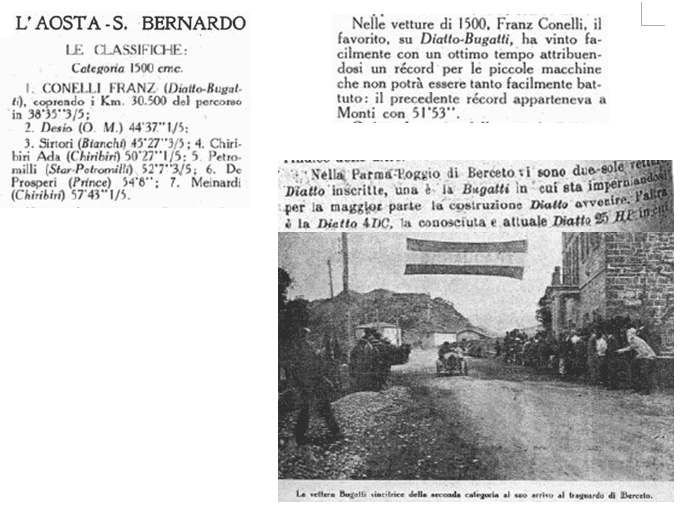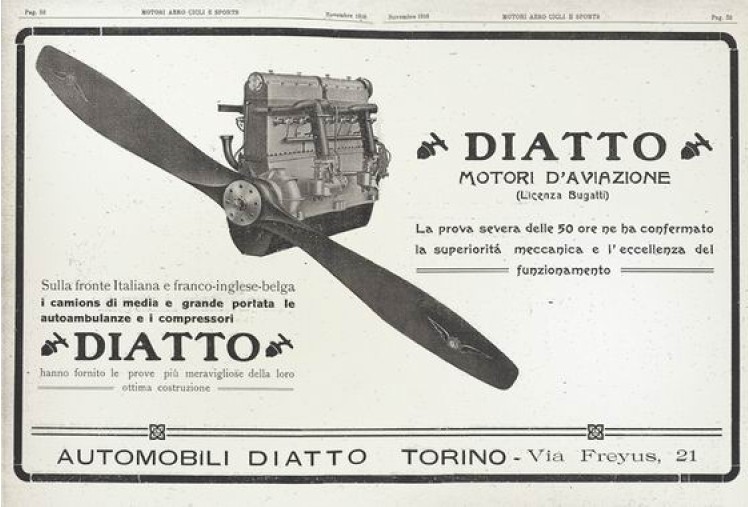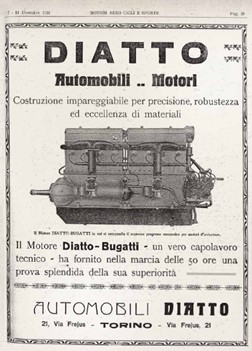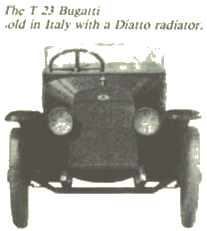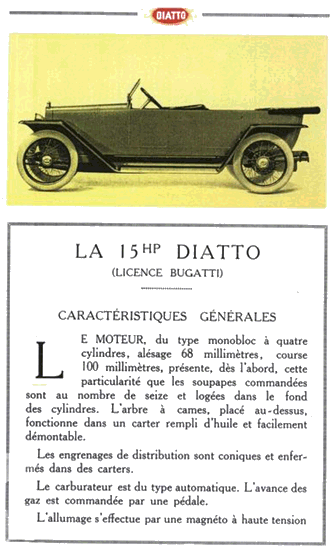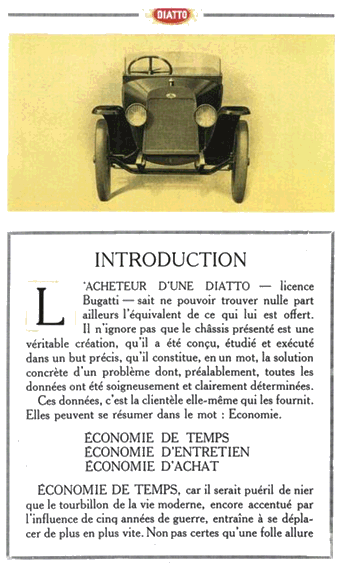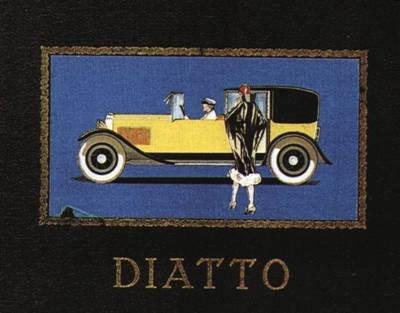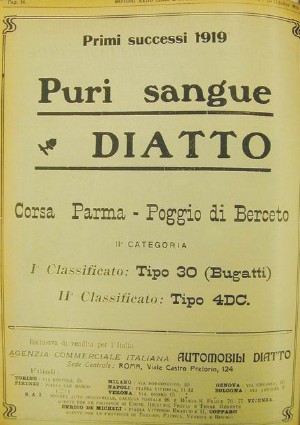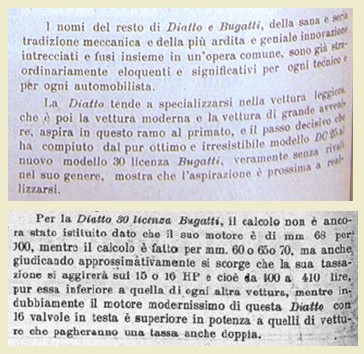DIATTO - BUGATTI
![]()
1915 - 1923: Partnership Diatto-Bugatti
|
|
|
1916 – Aviation engines Diatto-Bugatti |
1915 Aviation engines Diatto-Bugatti
Just before the war, Diatto reformed a working partnership with ex designer Ettore Bugatti, who had become a manufacturer in his own right. This partnership proved to be long and prosperous due to their shared expertise in the automotive and aviation industries.
Diatto’s “full cycle precision mechanics” and the ownership of their own foundry for cast iron, aluminium and bronze, were also unique platforms within the automotive industry.
Bugatti sold the patent of his 8 cylinder aviation engine to Diatto, which was to be constructed during the war. On 23rd September 1916, Diatto sent Bugatti an enthusiastic telegram: “I am happy to announce the excellent results for the engine … the testing resulted in a brilliant 210 HP”.
The magazines of the time celebrated the partnership’s success: “Official test of the Diatto-Bugatti engine: a technical masterpiece of unparalleled precision, constructed with robust materials of the highest quality, a compendium of the most modern technologies”.
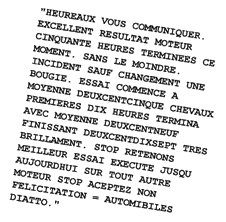 1919 - 1923 Luxury cars Diatto-Bugatti
1919 - 1923 Luxury cars Diatto-Bugatti
After the war, the collaboration was extended to the design and production of road and race cars, with Bugatti chassis and Diatto engines and vice-versa.
In 1919, at the International Salons of Paris (the company had a branch in the Champs-Elysées) and London, Diatto presented five top of the range cars, including the “16 valve Diatto 30”, featuring chassis designed by Bugatti: luxury Torpedoes, Convertibles and Coupés with internal steering, refined bodywork and antique silk and velvet upholstery.
The Paris upper classes, from Princess Murat to Madame Gould, bid against each other for the most luxurious Diatto-Bugatti cars at a price of 100,000 franks (the price of a Rolls Royce at the time). In the first post-war race, Diatto won an outstanding first and second place, Diatto 30 (Bugatti) and Diatto 4DC, at the Parma-Poggio di Berceto (see advert).
|
|
|
(From The Automobil, october 1999; see Print in English) |
Diatto sales of cars in the wake of these continuing victories rose sharply, enabling the company to optimise its production capacity. An excerpt from the 1919 press: “the names Diatto and Bugatti, with their long and sound tradition of mechanical engineering and daring innovation, brought together into a single enterprise, are extraordinarily eloquent and significant for any technician or automobile enthusiast”.
In 1921, Diatto and Bugatti agreed to construct a special series of race cars, initially with 25 HP Sport Diatto chassis modified with tubular axle, and 1500 cc 4 cylinder Bugatti engine with compressor. These special Diatto-Bugatti racing cars, lightweight and powerful, enjoyed considerable success in rallies and uphill competitions.
The Italo-French champion Franz Conelli, at the wheel of one of these Diatto-Bugatti 1500 cc race car, won international races such as the Gran Premio Gentleman of Brescia and the uphill time trials of Susa-Moncenisio and Aosta - Gran San Bernardo (30 km uphill, with a lead of 6 minutes over the powerful O.M. from Desio).
|
|
|
|
Brochure of the Diatto-Bugatti, presented at Paris and London motor show, produced from 1919 |
|
Furthermore, the Bugatti archives tell us that Bugatti race chassis n. 902 and n. 903, the second and third made for the “Brescia da corsa” model, were also equipped with the powerful 2 litre Diatto engine with 4 valves per cylinder, to witness once more the technological versatility of the partnership in racing: Diatto chassis with Bugatti engines and Bugatti chassis with Diatto engines.
|
|
|
|
Brochure of Diatto 30 Bugatti |
1919 - Paris International Motor show - The Diatto 30 Bugatti |
|
|
|
|
1919 – First race success Diatto - Bugatti |
